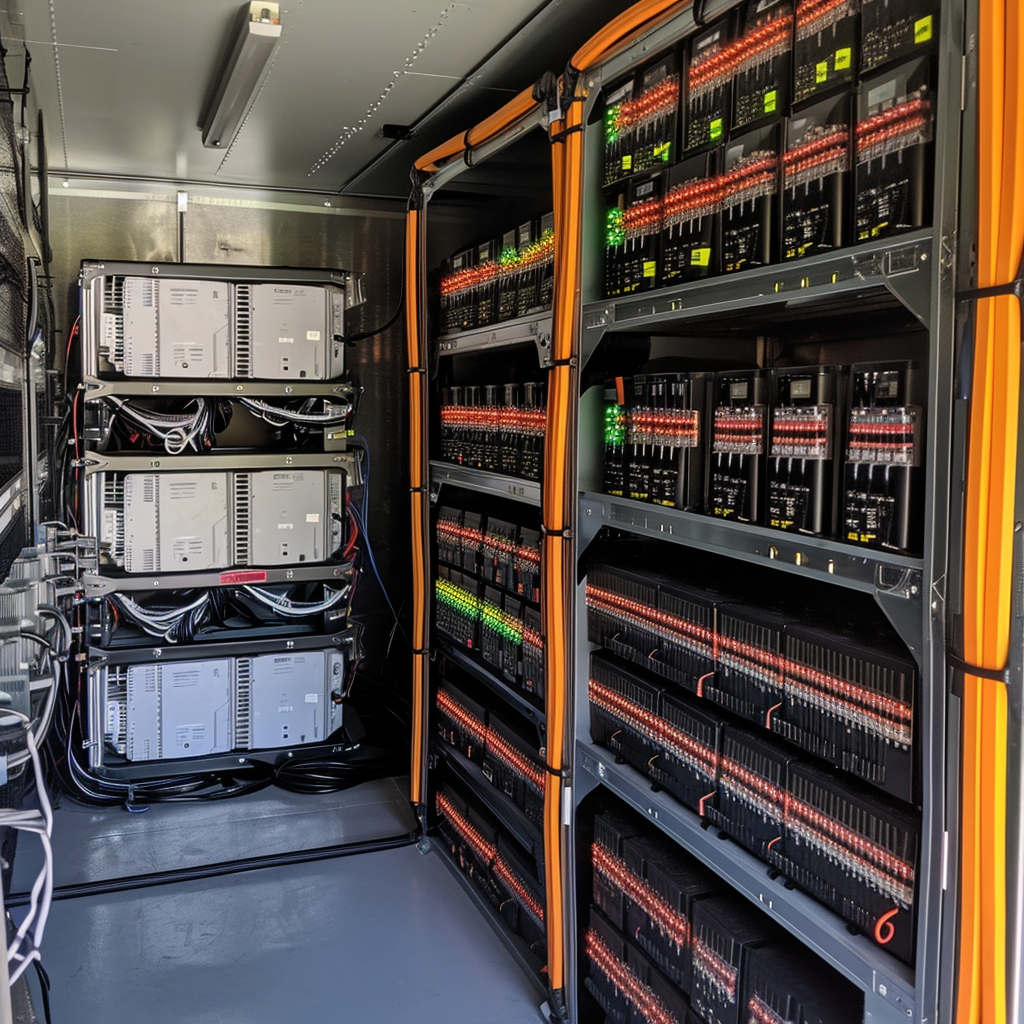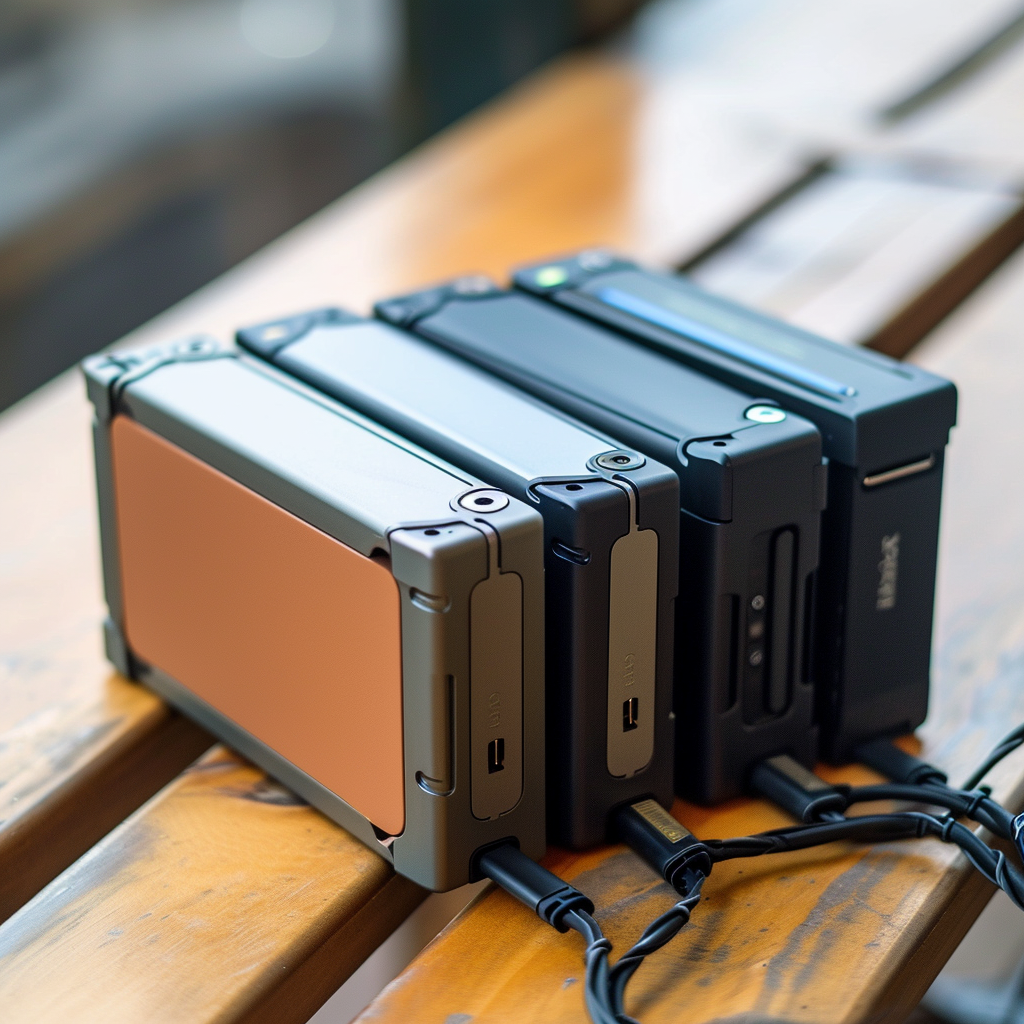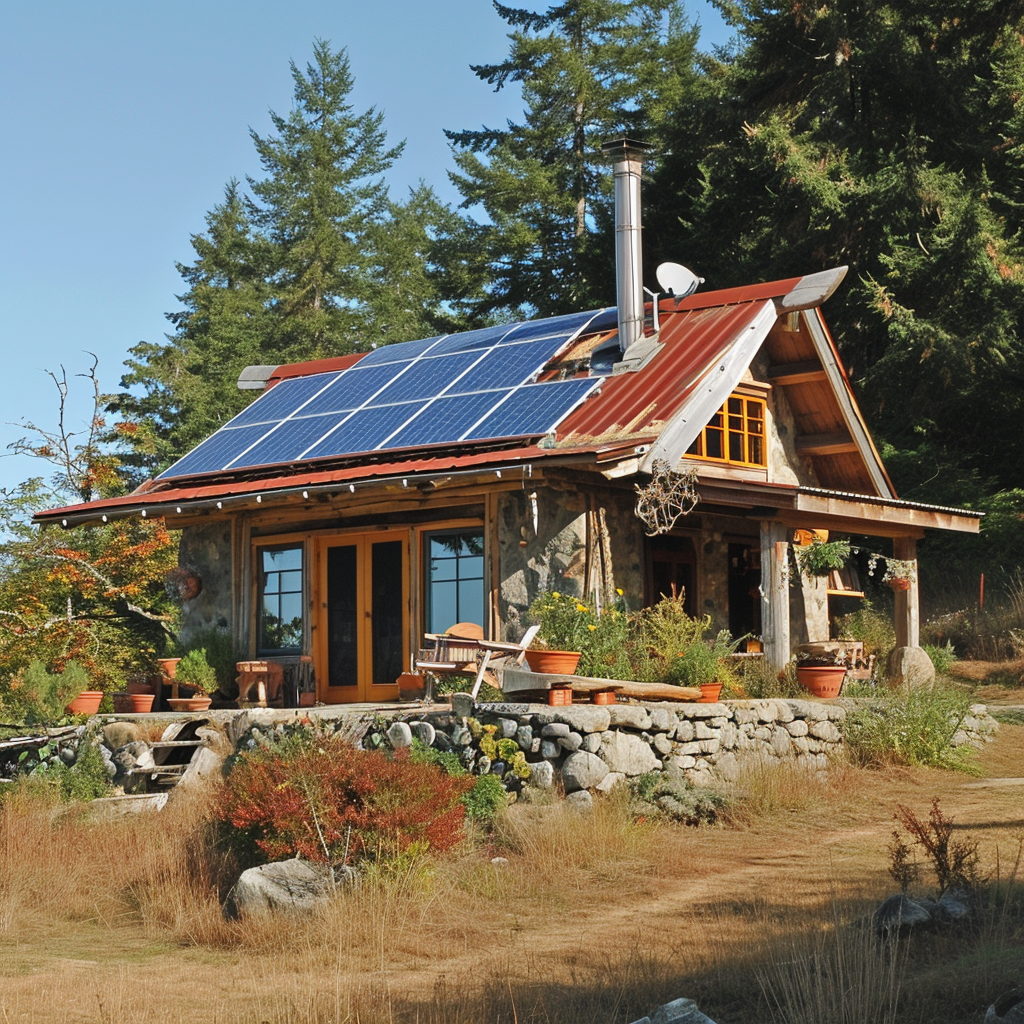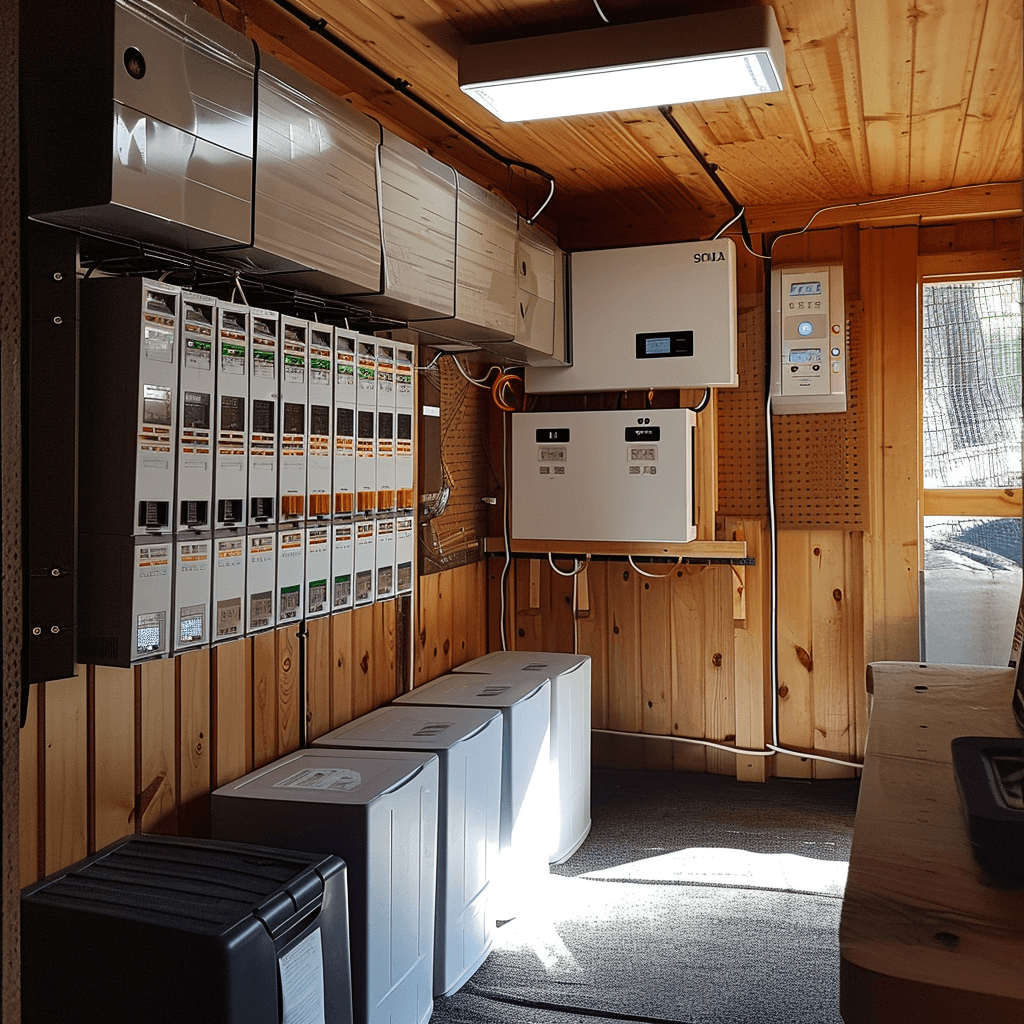So, you’re thinking about living off-grid, huh? That’s pretty cool! Being self-sufficient and independent can be very rewarding. But, I’m guessing you have a few questions, like How much battery do I need to be off-grid? Well, let me tell you, it depends on a few factors.
First of all, it depends on your energy consumption. How much power do you use on a daily basis? Are you going to be using renewable energy sources, like solar panels or wind turbines, to generate electricity? These are important considerations because they will determine how much battery storage you will require.
Another factor to consider is your location and the climate. If you live in an area with abundant sunlight or wind, you may need less battery capacity compared to someone living in a cloudy or low-wind region. Additionally, extreme temperatures, both hot and cold, can also affect battery performance, so you’ll need to take that into account.
In an upcoming article, we’ll delve into the specifics of maximizing battery life for off-grid living. We’ll discuss different battery types, such as lithium-ion and lead-acid, and their pros and cons. We’ll also explore energy-efficient strategies and technologies that can help you get the most out of your battery storage. So, stay tuned if you want to learn more about how to keep the lights on when you’re living off the grid!
Living off the grid has become an increasingly popular lifestyle choice for those seeking independence from traditional power sources. Whether it’s to reduce their carbon footprint, prepare for emergencies, or simply enjoy a more self-sufficient way of life, many people are opting to generate their own electricity and live off the grid. However, one of the biggest challenges of off-grid living is maximizing the lifespan and efficiency of your battery system.
Benefits of living off grid
Living off grid offers numerous benefits. First and foremost, it allows you to have complete control over your energy consumption, reducing the reliance on fossil fuels and decreasing your carbon footprint. Additionally, being off-grid provides a level of independence and self-sufficiency that is often lacking in modern society. You are not dependent on a centralized power grid and are less vulnerable to power outages and utility rate increases. Living off grid can also save you money in the long run, as you are not paying monthly bills for electricity.
Challenges of living off grid
While the benefits of living off grid are enticing, there are also challenges that come with this lifestyle choice. One of the biggest challenges is the limited storage capacity of battery systems. Without a constant supply of electricity from the grid, you need to rely on batteries to store excess solar or wind energy for use during periods of low generation. Estimating the required battery capacity can be complex and requires careful consideration of your energy usage and the specific appliances you plan to power.

Choosing to live off grid
Making the decision to live off grid requires careful consideration of your lifestyle, needs, and resources. It’s important to evaluate whether you have the financial means to invest in a reliable and efficient battery system, as well as the technical knowledge to maintain and optimize it. You should also assess your energy requirements and determine whether living off grid is feasible based on your location, climate, and available renewable energy sources.
Calculating battery requirements
Determining the energy usage of your off-grid system is crucial for sizing your battery bank. Start by listing all the appliances and devices you will be using, along with their power requirements in watts. Multiply the power consumption of each device by the number of hours it will be used each day to calculate the energy usage in watt-hours (Wh). Sum up the energy usage of all devices to get an estimate of your daily energy consumption.
Estimating battery capacity requires taking into account your desired depth of discharge (DOD), which is the amount of energy you are willing to draw from your batteries before recharging them. It’s generally recommended to keep the DOD between 50% and 80% to maximize battery life. Divide your daily energy consumption by the DOD to get an estimate of the minimum battery capacity needed.
Considerations for different appliances include the power requirements, usage patterns, and any startup surges. Some appliances, such as refrigerators or air conditioners, have high initial power demands, and you need to take this into account when sizing your battery bank. It’s crucial to accurately assess your energy needs for each specific appliance to ensure your battery system can handle the load.
Maximizing battery life
Once you have determined your battery requirements, it’s important to implement strategies to maximize battery life and optimize performance. Proper battery maintenance is essential for extending their lifespan. This includes regularly checking and maintaining the electrolyte levels in lead-acid batteries, ensuring proper ventilation, and cleaning terminals and connections. Regular inspections and cleaning can prevent corrosion and improve overall battery performance.
Effective charging strategies are also crucial for battery longevity. Avoid overcharging or undercharging your batteries, as both can lead to premature aging and reduced capacity. Utilize charge controllers and battery management systems to regulate the charging process and prevent overcharging. It’s also advisable to follow the manufacturer’s recommendations for charging voltages and temperature limits.
Utilizing renewable energy sources to charge your batteries is another way to maximize battery life. Solar panels, wind turbines, or hydroelectric systems can provide a constant source of clean energy to recharge your batteries. By relying on renewable energy, you can reduce the strain on your battery system and minimize the need for long periods of discharging.

Optimizing energy consumption
In addition to maximizing battery life, you should also focus on optimizing your energy consumption to further reduce the strain on your off-grid battery system. Energy-efficient appliances and lighting play a crucial role in minimizing energy usage. Invest in energy-efficient appliances that have a low standby power consumption and use LED or CFL lights that require less energy compared to traditional incandescent bulbs.
Implementing energy-saving habits is another effective way to reduce energy consumption. Simple actions like turning off lights when not in use, using power strips to easily switch off electronic devices, and air-drying clothes instead of using a dryer can significantly lower your energy usage. By being mindful of your energy consumption habits, you can further extend the life of your batteries and reduce your reliance on renewable energy generation.
Smart home automation solutions can also help optimize energy consumption. By integrating sensors and timers into your home automation system, you can automate the operation of appliances and adjust energy usage based on occupancy or natural lighting conditions. This level of automation ensures that energy is only used when necessary, maximizing efficiency and minimizing battery discharge.
Backup power options
While living off grid is all about being self-sufficient, it’s important to have backup power options in case of prolonged periods of low energy generation or system failures. A generator can serve as a reliable backup power source, especially during extended periods of bad weather or low sunlight. Additionally, having a secondary battery system that can be charged from an alternative energy source, such as a backup generator or vehicle alternator, provides an additional layer of security.
Connecting to the traditional grid as a last resort is also an option to consider. While it goes against the principle of off-grid living, connecting to the grid can serve as a backup option during emergencies or when your battery system is unable to meet the demand. However, this should only be used as a last resort, as it can undermine the self-sufficiency and independence that off-grid living offers.
Off-grid battery safety
Safety should always be a top priority when dealing with battery systems. Proper battery storage is essential to minimize the risk of accidents. Batteries should be stored in a cool, dry, and well-ventilated area, away from flammable materials. It’s important to follow manufacturer guidelines and use appropriate safety precautions when handling batteries, including wearing protective gear and avoiding short-circuits.
Proper battery disposal is also important for the environment. Lead-acid batteries should be recycled at authorized recycling centers to prevent lead pollution. Lithium-ion batteries should also be disposed of properly, as they can pose risks if mishandled or disposed of in regular waste. Many retailers and recycling centers offer battery recycling programs, so make sure to take advantage of these resources.
Avoiding common safety hazards such as overcharging, overloading, or exposing batteries to extreme temperatures is crucial to prevent accidents or damage. Regularly check for signs of damage, leaks, or swelling, and replace any damaged or aging batteries promptly. By maintaining a safe battery storage environment and practicing proper handling and disposal, you can ensure the safety and longevity of your off-grid battery system.
Monitoring battery performance
Monitoring the performance of your battery system is essential for identifying any potential issues or degradation. Utilize battery monitoring systems that provide real-time data on battery voltage, state of charge, and other relevant parameters. These systems can alert you to any abnormalities or deviations from expected performance, allowing you to address any problems promptly.
In addition to monitoring, regular battery health checks are crucial for maintaining optimal performance. This includes checking battery connections, cleaning terminals, and performing capacity tests. By periodically evaluating the health of your batteries, you can identify any signs of degradation or performance decline and take appropriate action.
Identifying signs of battery degradation is important for proactive maintenance. Common signs include reduced capacity, increased internal resistance, or shorter discharge times. By recognizing these signs early on, you can take steps to address the issue, such as replacing individual battery cells or investing in a new battery bank before experiencing a complete system failure.

Planning for seasonal variations
Off-grid living requires careful planning to account for seasonal variations in energy generation and consumption. Energy usage differs across different seasons, with increased energy needs for heating or cooling during extreme weather conditions. Adjust your energy usage accordingly by implementing energy-saving measures during peak demand periods and using alternative heating or cooling methods, such as passive design principles or wood-burning stoves.
Extreme weather conditions can also impact your battery system. Especially in colder climates, you need to take precautions to protect your battery bank from freezing temperatures. Insulating battery banks, utilizing battery heaters or blankets, and ensuring proper ventilation can help prevent damage and prolong battery life.
Winterizing your battery system is crucial for off-grid living. This includes installing frost guards or insulation around batteries, using heat tape or trace heating on battery cables, and ensuring proper ventilation to prevent condensation. By taking these steps, you can safeguard your batteries and ensure they continue to operate efficiently during the colder months.
Choosing the right battery technology
When it comes to choosing batteries for off-grid living, there are two main options to consider: lead-acid and lithium-ion batteries. Lead-acid batteries have been widely used for off-grid applications due to their lower upfront cost and reliability. They can withstand deep discharges and are suitable for applications with lower power demands. However, they require regular maintenance and have a limited lifespan compared to lithium-ion batteries.
Lithium-ion batteries, on the other hand, offer several advantages for off-grid living. They have a longer lifespan and higher energy density, allowing for more energy storage in a smaller footprint. They also require less maintenance and have a higher depth of discharge, allowing you to utilize a higher percentage of their capacity without damaging the batteries. However, they are typically more expensive upfront.
When choosing the right battery technology for your off-grid setup, consider factors such as lifespan, cost-effectiveness, energy density, maintenance requirements, and available budget. Assess your energy needs and long-term goals to determine which battery type is the best fit for your off-grid lifestyle.
Conclusion
Maximizing battery life is crucial for a successful off-grid living experience. By carefully calculating your battery requirements, implementing effective charging strategies, optimizing energy consumption, and considering backup power options, you can ensure the longevity and reliability of your battery system. It’s essential to prioritize safety, monitor battery performance, and plan for seasonal variations to address any potential issues. By choosing the right battery technology and taking proactive measures, you can make the most of your off-grid lifestyle while minimizing energy consumption and maximizing self-sufficiency.




